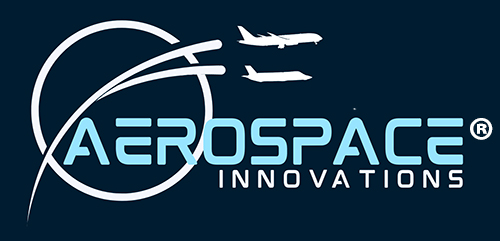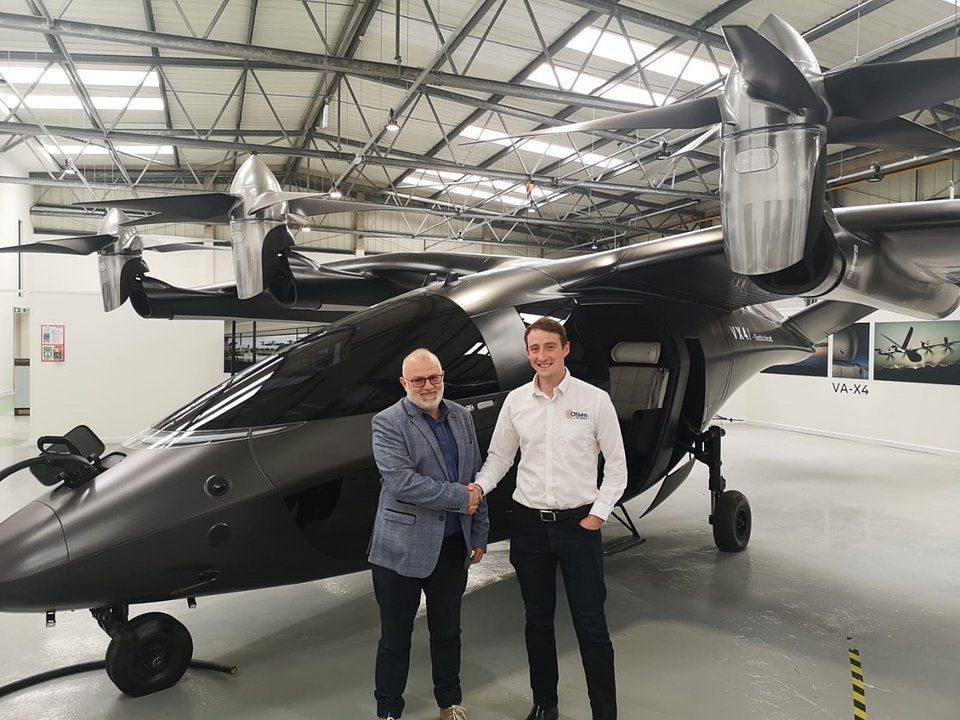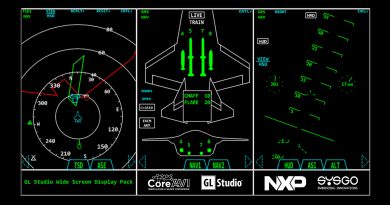Engineering the Future of Flight
The aviation industry is undergoing a huge transformation, driven largely by the need to cut global emissions. This drive for sustainability is shaping the future design and operation of both standard commercial airliners and aircraft carrying small numbers of passengers, the latter of which has led to the eVTOL (Electric Vertical Take-Off and Landing) aircraft market. Technological advancements such as in electric and hydrogen powered propulsion and in battery technology are opening the door to a new generation of aircraft. These innovations are also enabling new classes of air vehicles such as eVTOLs which will enable people to travel, transport goods, and deliver services by air in ways not currently possible.
These new types of aircraft will fulfil many diverse application requirements and consequently have different needs in terms of design, performance and energy efficiency. Therefore, to meet these various requirements, aircraft developers need new and innovative technology and components. When developing future aircraft prototypes whether they’re for commercial airline use or eVTOLs, its essential that companies have access to efficient and cost-effective technology right the way from the development and proof of concept phase, through to full production. Additionally, the success of the future flight industry will be reliant upon supply chains that can service the sector and are able to scale up as proof of concepts mature and move to full scale production.
A Major Transformation is Underway
Up until recently, aircraft have been reliant on jet-fuel or AVGAS for power, and hydraulic systems for controlling and actuating critical functions. For decades, the industry’s primary goal has been to make aircraft fly farther, faster, and more cost-effectively, with improvements typically coming in the form of fine-tuned engineering or upgraded materials rather than wholesale innovation. As such, aircraft designers have typically prioritised range, capacity and speed. Now, however, the drive for sustainability is necessitating that these priorities shift and this is changing the entire aviation landscape.
On the commercial aviation side, many airlines are reportedly moving towards sustainable aviation fuel (SAF). Virgin Atlantic’s Flight100 from London to New York hit the headlines in November 2023 as the first transatlantic flight to run on 100% SAF. However, SAF reduces rather than eliminates the release of CO2 when consumed, so is generally considered to be a short to medium term solution rather than the complete solution to reduce aviation’s impact. Both electric and hydrogen powered propulsion, are seen as potential alternatives to jet fuel and AVGAS, and as such are attracting a lot of investment and R&D effort. A number of companies are in the process of developing electrical propulsion units, and some of these have now been certified by regulatory bodies such as the EASA and the FAA.
More Electric Aircraft
According to the Aviation Impact Accelerator (AIA), the global aviation sector reportedly contributes 2-3% of annual CO2 emissions, and in addition to CO2 emissions, the industry is also responsible for non-CO2 emissions such as contrails which also have a significant environmental impact, making the true climate impact up to four times higher than when considering CO2 alone. AIA calculated that if nothing is done to reduce the aviation industry’s carbon emissions, and the sector continues to grow at 5% per year, by 2050, the industry’s emissions will have doubled and it will contribute up to 25% of global emissions.
The global goal of net-zero carbon emissions is the key driver behind the transition towards more electric aircraft. However, the move to electric powered aircraft is challenging for aircraft designers and manufacturers for a number of reasons. One of the key challenges that future flight designers face is energy density. Jet fuel typically has an energy density of around 12,000 watt-hours per kilogram, making it significantly more energy dense than batteries which are likely to be in the region of a few hundred watt-hours per kilogram. The batteries needed to produce the same energy as a tank of jet fuel would weigh a great deal more than the fuel and importantly would also take up a lot more space. This picture is very different with a smaller aircraft however, because they require less power to fly compared with a large commercial airliner.
Take your average commercial passenger plane the size of an Airbus A320, which seats between 168 and 180 passengers. To run it on batteries, the batteries would take up so much weight capacity and space, there would barely be enough weight or space left for passengers and luggage. Although improving battery technology is currently a major area of focus for aircraft companies and battery manufacturers alike, many industry experts think it unlikely that a standard commercial aircraft of the size we see today will run on electric power in the near or mid future. Having said that, there are some companies which are hoping to have zero-emission commercial aircraft flying across the Atlantic by 2035.
Role of Electromechanical Actuators
Providing there’s lots of electrical power available, aircraft design can eliminate the hydraulic system and replace it with electromechanical actuators. This is a huge step forward for the industry. Currently, the standard design for most if not all commercial aircraft is hydraulic, with hydraulic systems generally powering all actuation, such as doors, flight control systems, breaks, flaps and landing gear. However, while effective, hydraulic systems are extremely heavy, dirty, maintenance-intensive, and reliant on highly toxic fluids. If these hydraulics can be replaced with electromechanical systems, there’s big weight savings to be made, which is key for the next generation of aircraft.
Replacing hydraulics with electromechanical actuation delivers several benefits in addition to reducing the overall weight of the aircraft. For example, electromechanical actuators provide more precise control over motion, position, and torque than hydraulic systems, are more efficient because they only using power when active. Electromechanical systems also eliminate the use of toxic chemicals associated with hydraulic systems which carry a risk of contamination, as well as reducing servicing needs. These modern electromechanical systems open the door to aircraft architectures optimized around electric efficiency.
eVTOL Aircraft
As mentioned, the new classes of air vehicle that we’re starting to hear more about will fulfil many different application requirements and therefore have different needs in terms of manoeuvrability and reliability. One of the new classes of aircraft that’s currently attracting a lot of interest is eVTOLs. These aircraft use electric power to take off and land vertically, operating more like a helicopter that generates lift through spinning rotors rather than an airplane that generates lift as air moves over the wings. As a result, eVTOLs don’t need a runway or large landing area to take off or land. They are electrically propelled so create zero emissions, and additionally, are quieter and cleaner than traditional aircrafts, making them ideal for urban environments.
A number of companies around the world are developing eVTOLs, with the hope that they will form a key part of transport infrastructure in urban areas, enabling people to travel efficiently around cities in a sustainable way. One such pioneering company is Vertical Aerospace, which is developing the VX4, a fully electric, piloted, four passenger eVTOL aircraft, with planned cruise speeds of 150mph and a range of up to 100 miles. As you would expect, lightweight and efficient electromagnetic actuation and drive systems are a critical component on this type of aircraft.
Navigating the Development Journey
Whether the aim is more energy efficient standard commercial aircraft or zero-emission urban eVTOL taxis, innovation in future flight doesn’t begin on a runway or in a hanger, it begins with a concept that can meet a clearly defined need. The first phase is about translating a vision into functional, testable prototypes.
In the case of actuation and drive systems, one way to speed up this part of the process is to use commercial off-the-shelf (COTS) components. These components can then be customized to meet specific use cases, and then assembled into a prototype system in as little as 3 to 4 months. The use of COTS components in general along with customization avoids the complexity, cost and lengthy timescales that would typically be associated with in-house development of components and associated testing.
While the prototype system at this point, may not meet the safety requirements for flying an aircraft, it does demonstrate that the system can move all of the required parts in the aircraft, and can be used in a test rig or iron bird. As the aircraft designer or manufacturer develops their program and eventually moves towards a flying prototype, they can start testing other aspects of their requirements such as reliability and fatigue. This takes us to around 9 to 12 months from the beginning of the process, at which point, the initial prototype system can then be modified further to make sure it starts ticking off those requirements. And then at around the 18 months mark, by the time the company is ready to carry out a flying test, the actuation and drive system can be fully certified to all of the necessary regulations such as RTCA DO-160 and RTCA DO-178.
Designing with Purpose
To be successful, the future flight development process requires not just technical innovation, but also engineering excellence, and partners that understand the unique challenges that come with developing systems for aerospace environments and new aircraft classes such as eVTOL. Also critical is a trusted supply chain that’s able respond to evolving specifications with flexibility and consistency.
Every decision made during the early stages of design has a ripple effect, influencing how these future aircraft will perform, how sustainable they’ll be, and how easily they can scale from concept to commercial reality.That’s why the proof of concept phase is so critical. It’s the point where creative ambition meets practical engineering, and where choices around propulsion, materials, and actuation set the tone for everything that follows. It’s also where the value of a strong, responsive supply chain becomes clear, one that can keep pace with rapid development, adapt to new requirements, and support certification processes with confidence.
The future of flight is being engineered today. And it will be the partnerships, processes, and design choices made now that determine how successful, and indeed sustainable, the new generation of aircraft will be.
By Henry Hackford, Business Development Director, Olsen Actuators and Drives





